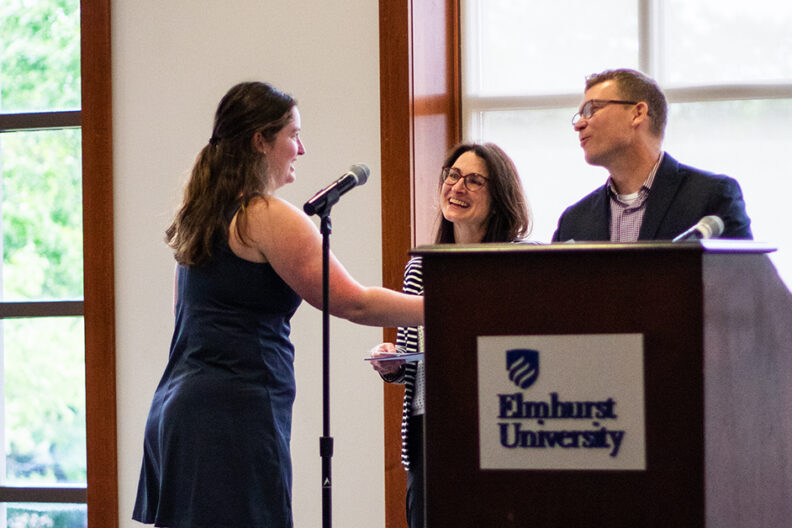Does Dual Language Bilingual Education Promote Equity?
Chalking the Line | BY Joseph Elliott | 10 MIN READ

Bilingual education programs are existent throughout the United States. However, do these programs properly service children?
Dual language bilingual education (DLBE) in the United States presents a unique opportunity for children to learn reading and writing in two languages and develop bilingualism in school. Unlike world or foreign language classes that teach language as a subject, DLBE immerses children in a partner language and English throughout the school day.
At the same time, these children learn traditional subjects like math, science, social studies and language arts. Teachers address state-adopted standards and follow a standards-aligned curriculum, allowing students to succeed in two languages rather than only in English. During the program, students learn grade-level content while developing bilingual abilities and skills; DLBE aims for all participating students to achieve bilingualism and biliteracy upon program completion (García & Kleifgen, 2018).
According to recent statistics, 44 U.S. states reported having over 3,600 DLBE programs (American Councils for International Education [ACIE], 2021), making them a popular option for families and children now more than ever.
Language Diversity and Bilingual Education in Schools
Federal law requires states to identify students who are developing English and may need linguistic support to achieve grade-level success in the classroom. Over time, educational legislation and policies have referred to these students using categories such as limited English proficient (LEP), English language learner (ELL), and English learner (EL), signaling language difference as a problem and English as the status quo.
However, a more inclusive category – emergent bilingual (EB) – has gained traction in education for its focus on bilingual development over English assimilation and dominance (García & Kleifgen, 2018). Along with expanding their English proficiency, EBs have a wealth of knowledge of languages such as Spanish, Arabic, Mandarin, Vietnamese and Hmong from their diverse families, communities and home countries. In U.S. schools, emergent bilinguals represent over 400 languages (National Center for Education Statistics, 2023).
DLBE Program Models
DLBE can provide students, including those identified as emergent bilinguals, a setting to sustain their home language, develop English and achieve academic goals and outcomes. Research has demonstrated how bilingual instruction helps emergent bilinguals attain more academic success compared to monolingual instruction (Umansky & Reardon, 2014).
Under state laws, EB may be entitled to bilingual education. For example, Illinois law requires school districts to implement transitional bilingual education (TBE) when 20 or more emergent bilinguals share the same home language (Illinois School Code, 2015).
As the state-required minimum for bilingual education, TBE is a subtractive model, meaning teachers use home language instruction but only for a limited number of years. By contrast, DLBE is additive, meaning the program provides instruction in a partner language and English for the length of the program. In this model, emergent bilinguals can maintain their bilingualism and biliteracy rather than gradually changing to only English during the program (García & Kleifgen, 2018).
Most DLBE programs use Spanish as the partner language, but many programs offer languages like Mandarin, Russian, Polish and Japanese (ACIE, 2021). DLBE has the potential to foster bilingualism and promote language diversity across the nation despite the ubiquity of English worldwide.
Different Student Groups in DLBE
DLBE programs differ in terms of which student groups they serve. One-way immersion refers to programs serving emergent bilinguals who share a common home language. This means participating students learn through a partner language like Spanish while acquiring grade-level expectations in English.
Another program model, two-way immersion, brings together emergent bilinguals and English-speaking students who benefit from learning another language. Two-way immersion classrooms typically comprise half EBs and half monolingual English-speaking students. Under this approach, EBs continue to learn using their home language and English.
At the same time, monolingual English speakers acquire a language that they would not have exposure to ordinarily within their families or communities (García & Kleifgen, 2018). Proponents of two-way immersion suggest that children from different language backgrounds learn from one another just as they would from the teacher (Howard et al., 2018). English-speaking children in two-way immersion often come from white and middle- and upper-class backgrounds. Many of these families choose two-way immersion for their children considering the many social and economic benefits of bilingualism (Flores & García. 2017).
Equity and Choice in DLBE
Given the rampant inequality and persistent opportunity gaps across the educational landscape, concerns over who benefits from DLBE have come into question. Guadalupe Valdés (1997, 2018) was one of the first education scholars to express concern over power dynamics and imbalances as white and middle- and upper-class families compete for spaces and resources in DLBE against emergent families from working-class backgrounds, a majority of whom are racialized Spanish speakers. Key to understanding these disparities is seeing how language, race and identity intersect to create different bilingual experiences and journeys for students.
For example, emergent bilinguals are circumstantial bilinguals, which means their language practices emerge from complex social and political processes like immigration, colonialism, shifting borders and formation of post-colonial nations. For circumstantial bilinguals, their home language by itself cannot help them succeed in U.S. schools and society dominated by English (Valdés & Figueroa, 1994). In fact, many emergent bilingual families must learn English to not only thrive but also survive (e.g., buying food, paying bills, and accessing medical care).
In comparison, white English-speaking students are elective bilinguals, meaning they join a DLBE program and choose to learn another language like Spanish, positioning themselves purposely in a setting to become bilingual. Unlike circumstantial bilinguals, elective bilinguals do not need another language to thrive or survive in places where English is already the norm.
International students who come to the United States to learn English are also elective bilinguals (Valdés & Figueroa, 1994). Their capacity for choice – as opposed to political condition or necessity – is a powerful privilege (Flores & García. 2017). In these ways, recognizing differences in bilingual identities and pathways is an important first step for shedding light on inequities impacting emergent bilinguals and every student’s potential to learn and grow bilingually in DLBE and beyond.
Prejudice and Discrimination in DLBE
Issues of segregation, racism, and discrimination have persisted in DLBE. Pimental’s (2011) research in a DLBE program found that the school’s configuration segregated emergent bilinguals inside mobile classrooms apart from the main area of the building. This left them with limited access to areas such as the school library and playground. Palmer’s (2007) research in a different DLBE program revealed staff’s racism towards students of color. This included beliefs that Black students acted poorly and racialized Spanish speakers struggled to learn because of their perceived linguistic disadvantages. Meanwhile, staff believed white students behaved well and achieved academic success. In the same study, the researcher documented how the two-way immersion classrooms was comprised of 45% white students. Yet, Black students comprised 43% of English-only classrooms in the same school, highlighting an insidious assumption that Black children benefit less from bilingual education compared to white ones.
Negative assumptions around emergent bilinguals in DLBE have promoted deficit-based thinking about their identities and ways of being. According to Valdés (2018), “ideologies of language have been defined as unexamined ideas and beliefs that shape people’s thinking about language itself and about those who use language” (p. 396). My research interviewing DLBE staff revealed beliefs that emergent bilinguals’ home languages were low and that their language practices were not educated, broken and not very academic. Not only are these beliefs misguided and wrong, but they are also rooted in a long history of racial and linguistic prejudice.
Moving Forward: Anti-Oppression in DLBE
Given these challenges, how should DLBE stakeholders move forward? Most reforms in bilingual education have largely focused on fixing students and their perceived linguistic, cultural, and racial deficiencies. However, scholars like Flores and Chaparro (2018) have called on policymakers to help fix societal barriers instead of trying to fix children and families who are not broken in the first place. These barriers include racism, segregation, income inequality, gentrification, health care disparities and more. In this way, DLBE programs must prioritize emergent bilinguals from working-class backgrounds over middle- and upper-class white children and families who already possess many privileges. Programs should also create inclusive environments for Black and Indigenous students whose language practices and identities remain on the periphery of society compared to colonial ones like English and Spanish.
Policymakers and administrators in DLBE must promote awareness of linguistic and racial discrimination within program policies and practices. They can foster critical conversations and actions among staff during meetings and professional development to help dismantle oppression and carry out justice. In turn, teachers can reflect on their belief systems and practices to better ensure equity and justice for marginalized groups, including emergent bilinguals.
In summary, DLBE programs and stakeholders must come together to prioritize marginalized students and families first and affirm a commitment that every child deserves to grow bilingually regardless of background.
Want to Learn More?
Elmhurst University’s School of Education has multiple graduate programs and certificate courses available. To learn more, please fill out the form below.



